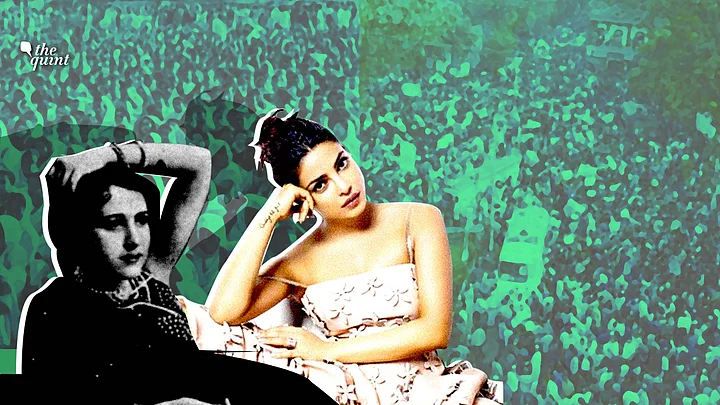Ah, 2020 — the beginning of a new decade and a good time to look back on how far we’ve come as a country.
So much of life in 2020 now seems mundane and everyday, but a century earlier, the things we take for granted now were only imaginary at best in 1920: a free country, or the conveniences of technology, like mobile phones, which make it easy to call a loved one.
1920 India was a different world. An undivided India, in the throes of a revolution against the British Raj, with new technology like the tram and silent films making a mark.
Throughout the country, there was a sense that things were in churn. But how did daily life in India circa 1920 compare with life in 2020?
How would you travel? What would you read in a newspaper? What would your favourite theatre play?
In Delhi, Tram vs Metro
Trams are usually associated with Mumbai or Calcutta, but trams in Delhi began in 1908 and reached their zenith in 1921. The system was shut down in 1953.
And now, since its introduction in 2002, the tram’s modern avatar, the Delhi Metro has become indispensable to the city. In 2020, after adding six more routes in Phase IV, the Delhi Metro is the best way to travel in the city while avoiding traffic.
Non-Cooperation Movement vs Anti-CAA Protests
Crowds protesting in every city, a politically fiery time and anger among the public. Sounds familiar? Going in to 2020, India has been gripped by nationwide protests against the Citizenship Amendment Act, 2019. The protests have now surged into a fight for India’s identity and secularism.
Something similar was afoot in 1920, when the Khilafat movement and Gandhi’s Non-Cooperation movement were launched. For the first time, India’s people were demanding a say in determining their fate, by boycotting British-made goods. The photo on the left, is of a young Indian nationalist holding a placard to “boycott foreign goods” in 1930. On the right, is a photo from an anti-CAA protest in Mumbai’s August Kranti Maidan.
Two protests, separated by nearly a century.
Fashion Trends Which Have Come Back
A puffed sleeve is the biggest trend for 2020... and was also a trend in 1920. Puffed-sleeve blouses paired with lace sarees, accessorised with pearls, was a stylish way to dress. It’s pretty much the same in 2020, except puffed-sleeves can now be worn with dresses, suits and gowns. Take a cue from Anushka Sharma, if you’re confused.
Patience Cooper vs Priyanka Chopra
Patience Cooper was the biggest star of the 1920s and the film which made her a household name was released in 1920.
Madan Theatres’ Nala and Damayanti starring Patience as Damayanti and Keki Adajania as Nala. Cooper, an Anglo-Indian from Calcutta, had a successful career till the mid-1930s. Many called her India’s first female star.
In 2020, India has many female stars. But arguably the biggest — in terms of her reach, longevity of her career, multi-hyphenate roles as producer and entrepreneur — is Priyanka Chopra.
In 2019, she made a mark with her film Sky is Pink and it looks like she’s not stopping any time soon. Patience Cooper would have been proud.
Cars: Then vs Now
In 1920, cars started to become common in India, after Ford and General Motors began to sell cheaper vehicles. On the left, is a photo of early cars in Poona (now, Pune) in 1920. This photo was released by the Heritage Transport Museum. On the right, are the latest models of the upcoming Mercedes-Benz cars in India in 2019-20.
Was There a Sabyasachi in 1920?
Not really. But this group of women, upper-caste Hindus as can be seen from the style of their saree - in Bombay (now Mumbai) in 1922, packed quite a sartorial punch.
What Are the Headlines Saying?
India is the second-largest market for newspapers in the world. And also one of the oldest with Bombay Samachar being published in 1822 and having the distinction of being the oldest continuously published newspaper in India.
On the left, is the front page of The Times of India in 1920 —still one of the most widely circulated English language newspapers in India.
Through the years, the newspaper industry grew; recording history in its pages as India transformed.
One of the biggest headlines in 2019 was when Article 370 was abrogated and the state of Jammu and Kashmir became a Union Territory. Another historical event, recorded on paper, for posterity.
Victoria Terminus or Chhatrapati Shivaji Terminus: Still a Photo Destination
Iconic buildings are always iconic...and worthy of a photo. On the photo in the left, young boys pose in front of Victoria Terminus. In 2020, even though the name has changed, Chhatrapati Shivaji Terminus is still representative of the city it calls home.
A Fight for India
On the left, is the iconic image of Gandhi during the non-cooperation movement. On the right, is an aerial view of the massive crowd which turned up at August Kranti Maidan in Mumbai to raise their voice against the Citizenship Amendment Act and National Register of Citizens (NRC).
Snail Mail, Literally
In the age of email, Whatsapp, Twitter and Facebook, it’s hard to imagine a time when unfettered communication was a privilege. When, to communicate quickly with someone, one needed money and brevity.
The telegram in 1920 was ubiquitous. In 2020, it’s dead. The telegram service was last used in India in 2013.
If you ask someone if they use “Telegram” in 2020, they’d probably enthusiastically agree about how it’s a great way to communicate. “You’re talking about Telegram, the app, right?”
(At The Quint, we question everything. Play an active role in shaping our journalism by becoming a member today.)
